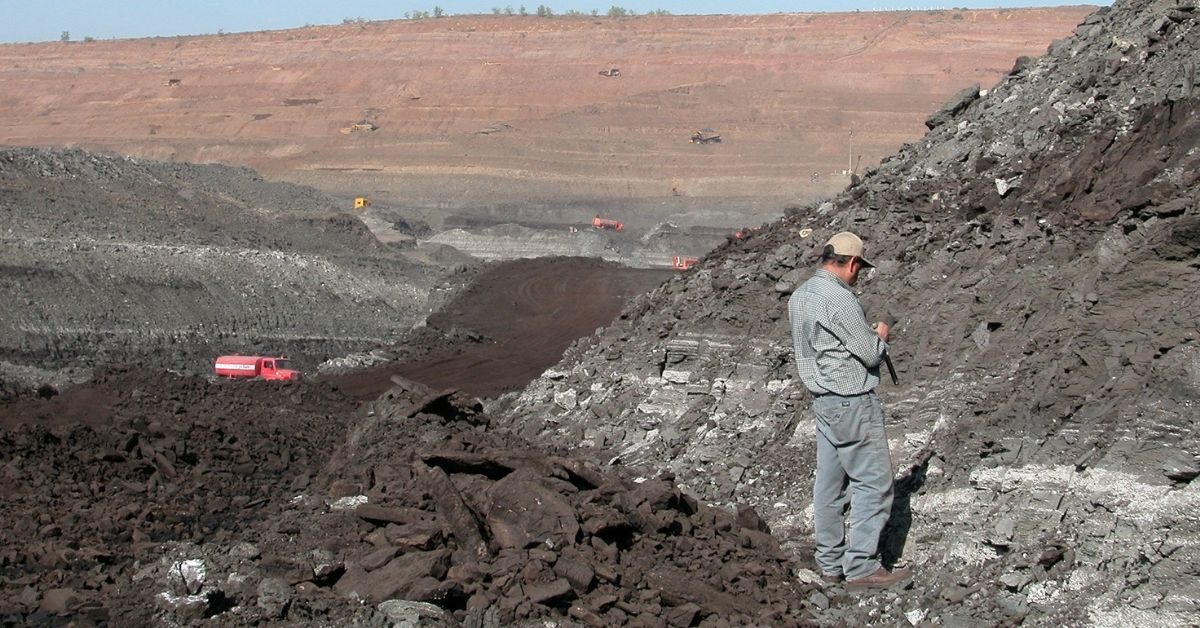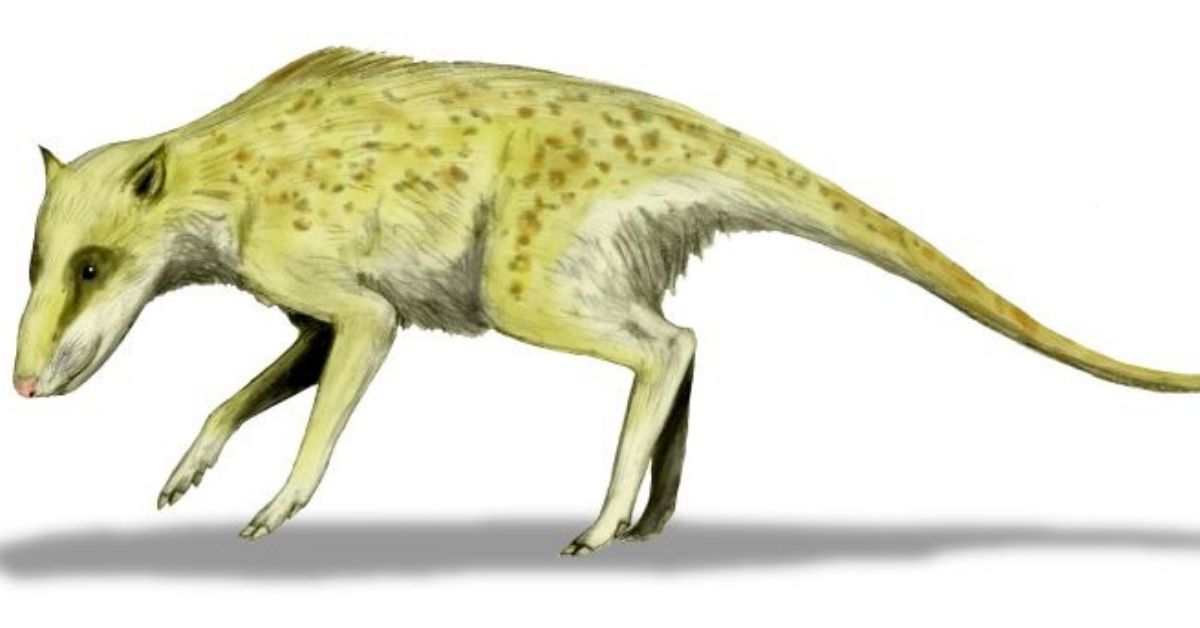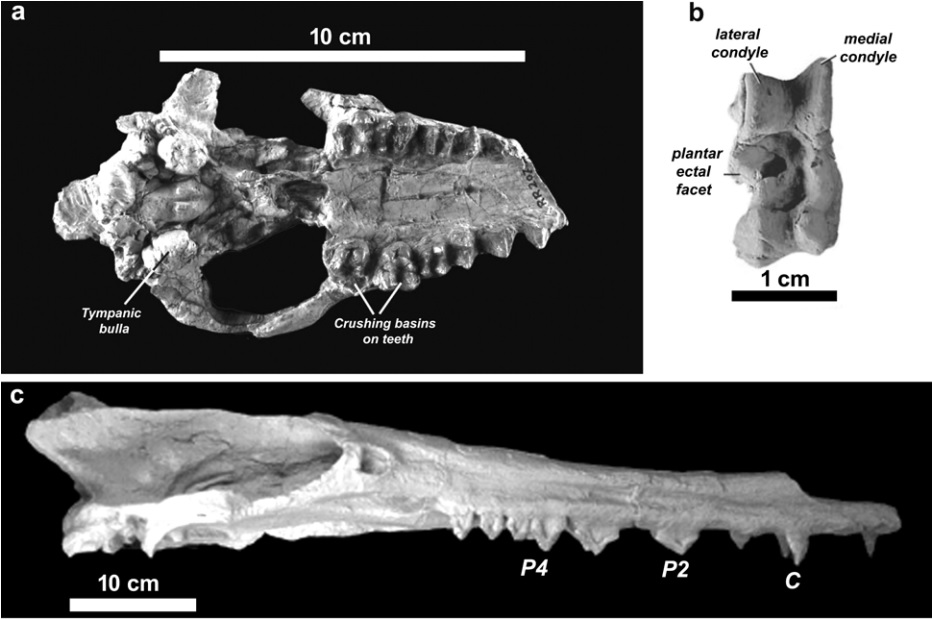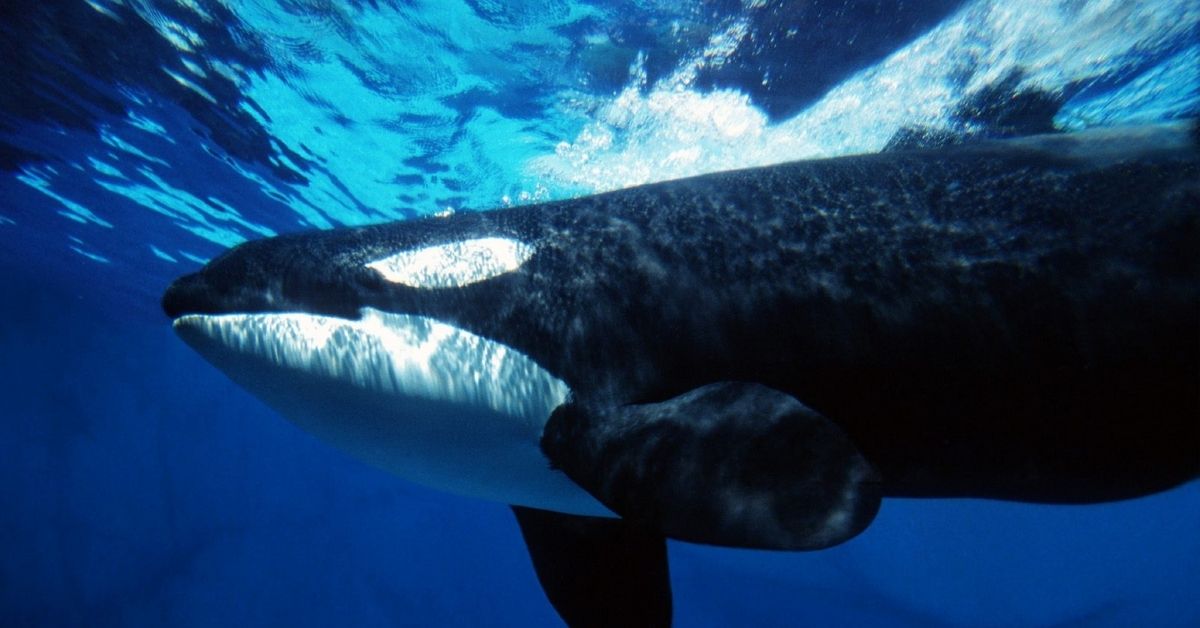Millions of years ago, as the isolated landmass drifted across the Tethys Ocean, a tiny, four-legged deer-like creature traversed the remotest corners of the Indian subcontinent. Today, a descendant of that creature swims the oceans as the world’s largest mammal to have ever lived.
That whales, or rather all cetaceans (comprising whales, dolphins and porpoises), are mammals is a fact that has been long established. This is because they have two features known only to mammals — they nurse their young with milk and some have sparse hairs on their bodies. As professor Sunil Bajpai, paleontologist and Head of Department of Earth Sciences at IIT-Roorkee, wrote in one of his research papers, because mammals originated on land, it is implied that cetaceans had land ancestors that went through a transition from land to water.

In the case of whales, a tiny land animal called Indohyus (Indo — India, hyus — a hyena-like land animal), which existed over 50 million years ago, is the earliest known ancestor. The discovery of its fossils was first made in the Himalayas in 2007, says Prof Bajpai, whose interests lie in fossils of vertebrate animals.
In 1936, naturalist Remington Kellogg said that no fossils of whales had been found in the Indian subcontinent. He said there was “very strong evidence that they had not yet invaded these regions”. Bapai says that Kellogg’s inference has since been proven wrong by a series of discoveries made in India and Pakistan, first by Vijay Prakash Mishra and Ashok Sahni in the 70s in Kutch, Gujarat. More recently, in the last 20 years or so, the discovery of the remains of Indohyus by Prof Bajpai and Dutch-American paleontologist Hans Thewissen, have been notable in tracing the ancestry of whales to India.
Prof Bajpai speaks to The Better India regarding his findings over the course of the last 30 years. “Remnants of the earliest whale, which were still learning how to adapt to sea life, were found in a large number in Kutch. We discovered a number of families, which together tell us how these animals moved from land to see,” he says.
How a cat-sized land animal became the mighty whale

Speaking about the features of the Indohyus, he adds, “The animal was found to have features that are only found in whales. For example, the structure of its middle ear was exactly the same as whales. All its other features indicated that it was a land animal, including well-developed legs and teeth.”
In 1971, Indian geologist A Ranga Rao first discovered its fossils among rocks in the Kalkot region of Jammu & Kashmir. These included a few teeth and parts of the animal’s jawbone. When Rao passed away, many of these rocks were yet to be broken. Years later, his widow handed these rocks over to Thewissen. While working on them, his technician accidentally broke on the skulls, and its ear structure was first discovered.
Bajpai explains, “The animal probably jumped into water when it faced threats from predators, and later evolved in this manner. There was no other way to explain its heavy bones, which are not actually required for land animals and are meant to counteract buoyancy in the animal when it’s in water.”
Delving further into details surrounding Indohyus’s transition from land to water, the 59-year-old says, “The animal went through several changes. This included locomotion, hearing, balance, and diet.”
Another change was that of its hearing. In mammals, the ear has sensory organs dedicated to hearing and balance, the science of which differs in land and water. The discovery and study of sound transmission mechanisms played a role in early cetacean evolution. Prof Bajpai says that because elements of the hearing system are bony and fossilise, its evolution has been well documented. These findings were able to tell Bajpai and team how early whales started out with sound transmission mechanisms found in land mammals which were slowly modified as they took to water.
Modern whales swim by moving their tail flukes through the water in a vertical plane, and this is assisted by their flippers, especially while turning. The Indohyus, however, was a slow wader, similar to the modern hippopotamus. Prof Bajpai notes that it is unlikely that these mammals were fast swimmers, because their bones had thick cortical layers which would have significantly increased their inertia and drag. Modern whales have thin cortical bones and are built to be able to swim much faster.
The Indohyus is the only animal from the Raeollidae, which is a family of artiodactyls, whose skulls and bones have been recovered. Raeollidea only existed in what is now Pakistan and western India, nearly 45 to 55 million years ago.

‘Conquering the oceans’
Over the years, Bajpai and his team have found several fossils that document different phases of this animal’s transition. Next in line was the Pakicetid, whose remains were first discovered before World War II, but they were so fragmented that they were not recognised as cetaceans. Like the Indohyus, Pakicetidae are also only known to Pakistan and western India. It was found that both Raeollidea and Pakicetidae had aquatic adaptations. What is interesting to note, says Prof Bajpai, was that Pakicetidae had teeth with cusps, or elevated bumps on the tooth, that were high and separated from other cusps by deep valleys. They had large polished areas on their enamel, caused by tooth-to-tooth contact. This wear, he says, has been correlated with fish eating.
Then came the Ambulocetidae, whose remains were found in Northern Pakistan and northwestern India. The fossils were around 49 million years old. This was much larger than Pakicetidae, around the size of a large male sea lion. This early whale had short and powerful legs, four toes and five fingers, and may have resembled the present-day crocodile. Its hunting behaviour seemed pretty similar to crocodiles as well. These also had heavy limb bones and were possibly not fast-moving predators.
Next, there was the Remingtonocetidae, named after Kellogg, which existed 41-48 million years ago, in India and Pakistan, says Prof Bajpai. They were charactarised by their long snouts, and their molars had now lost the crushing basins found in Ambulocetidae and Pakicetidae, suggesting that their diets had changed as well. Their skeletal remains showed short legs and powerful tails, indicating that they may have used their tail to propel themselves in and around water, and only used limbs for steering.

Then came the Protocetids, or as Prof Bajpai says, “the cetaceans that conquered the oceans”. While the earlier cetaceans were only known from India and Pakistan, these were swimming the oceans across the globe. They were known to be found in low latitudes of Asia, Africa, Europe, and North America.
The final form that bears the closest resemblance to modern whales is the Basilosaurid. Their nasal openings had shifted back towards the eyes to form the blowhole, and had flippers for forelimbs, a fluke at the end of its tail, and small hind limbs. These limbs were far too small to support body weight on land, indicating that Basilosauridae were the first to fully remain in the ocean.

The big picture
Speaking about the long process of these discoveries and what challenges he faced along the way, Prof Bajpai says, “The biggest challenge is the discovery of fossils itself. It’s not easy to find remains that are well preserved and not fragmented. It is essential to find fossils that remain anatomically complete. If you find, say, one tooth, or part of a jaw, it won’t tell you the whole story.”
He also notes, “We have a large collection of fossils, but some parts remain missing. The issue then is that we get a number of fossils but we don’t know which belongs to which species. Fossils are often found unassociated — say you find the arm of one species and the leg of another. It is then difficult to associate both to only one. We need mechanisms to find intact fossils that will help us deal with this problem.”
Another challenge, he says, is finding adequate funds to conduct field work in India. Moreover, he says there isn’t any legislation in place in India to protect and preserve fossil sites. “Fossils once gone will never be recovered,” Prof Bapai adds.
He also cites the example of coal mines, which remove very important fossiliferous formations during the process of mining. “For them, this material is an overburden, which they have to remove in order to get lignite or coal. But for a scientist, that’s a lot of data that has been lost, worth over millions of years. It’s important for even children to know the rich treasure and heritage of fossil wealth, which there’s a lack of awareness around, unlike in most European countries, or in the US,” he says.
This awareness, Prof Bajpai says, will come from the construction of proper museums that house such discoveries.
In addition to tracing the fascinating story of whales, Prof Bajpai has also studied several land animals that originated in India. This included an excavation around 15 years ago near coal mines in Surat, where they discovered fossils of a very early land animal from which the present-day horse has descended. Others include the earliest sheep and even primates, including apes, that were found near these coal mines. “Other groups have also worked on these discoveries, but most of them were found and named by us. The latter is extremely important. We named a new family of very primitive horses. Prior to this, it was believed horses originated in China. Now it’s almost certain that their origins were in India,” he says.
“You don’t make discoveries every day. You come to understand the full story only when you find more and more fossils. These are only bits and pieces that have been scattered all over. Only when you have all of them will you be able to trace the whole picture,” Prof Bajpai says.
Edited by Yoshita Rao
No comments:
Post a Comment